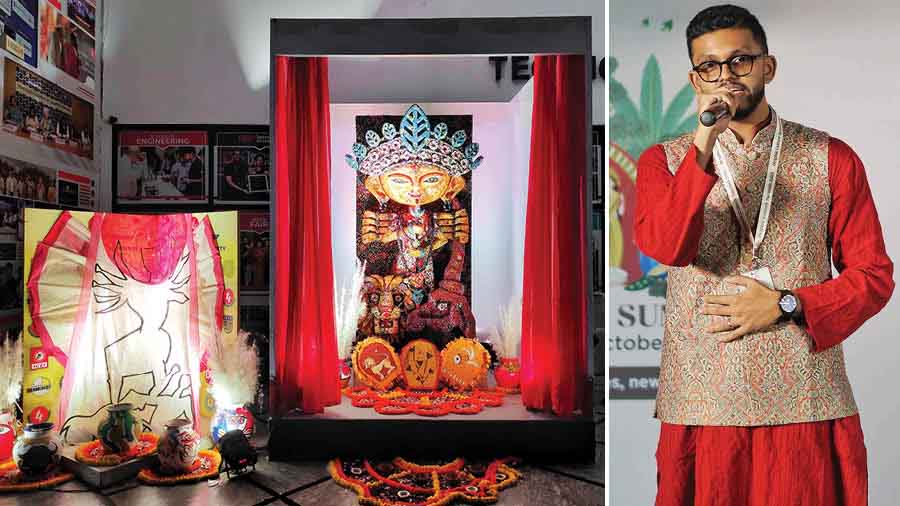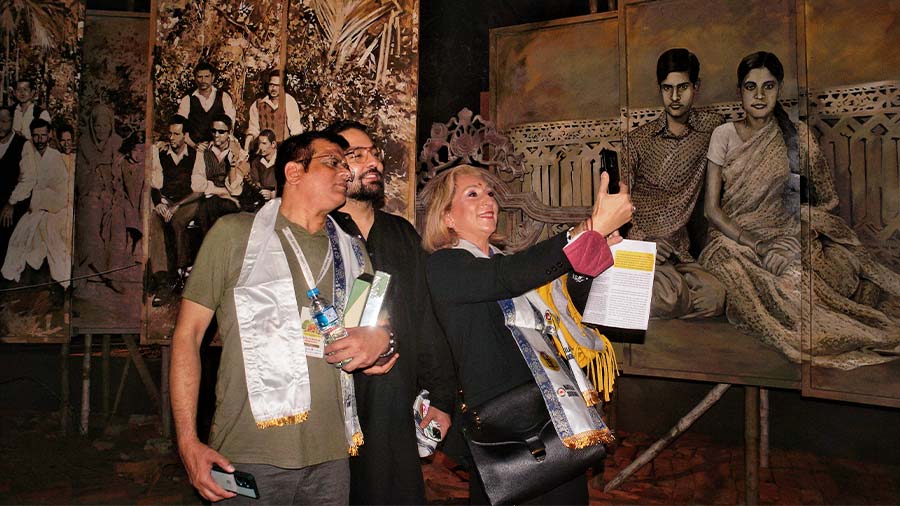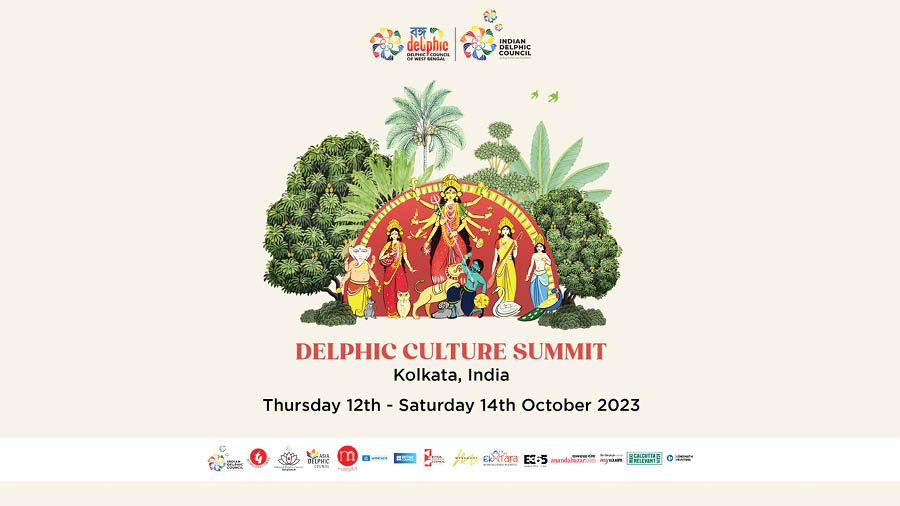Kolkata is often regarded as the intellectual and artistic capital of the country. Bengalis’ obsession with culture made it the perfect setting for the Delphic Culture Summit, hosted by the International Delphic Council (IDC), along with the Delphic Council of West Bengal from October 12 to 14. The event was a part of the Durga Puja Preview, jointly presented by MassArt, Unesco and British Council India. My Kolkata was there.
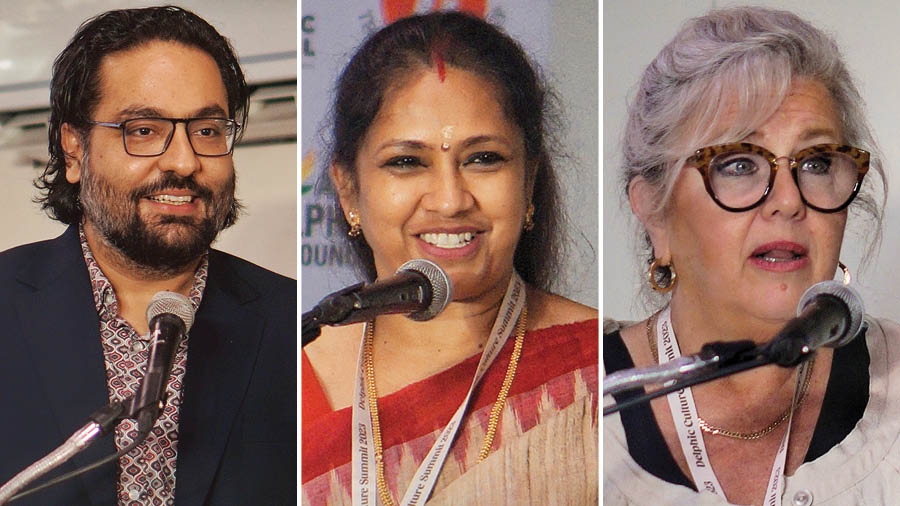
The opening day had enriching speaker sessions by (from left to right), IAS Rajanvir Singh Kapur, managing director, West Bengal Transport Corporation, Manoshi RoyChowdhury, co-chairperson of Techno India Group, and Roberta Williams, IDC Membership Chair from New York
The IDC is a body that aims to connect people through arts and culture, much like how the Olympics do so with sport. The principal objective of the summit was to utilise Durga Puja as a backdrop to showcase Bengal’s rich cultural heritage to influential people from around the world. “Art is a great catalyst for change and bringing people together, and Durga Puja is the most democratic art installation, open to everyone irrespective of their socio-economic class. At this summit, we are celebrating the power of unity, arts and culture,” said Meghdut Roy Chowdhury, president, Delphic Council of West Bengal, popularly known as Bongo Delphic.
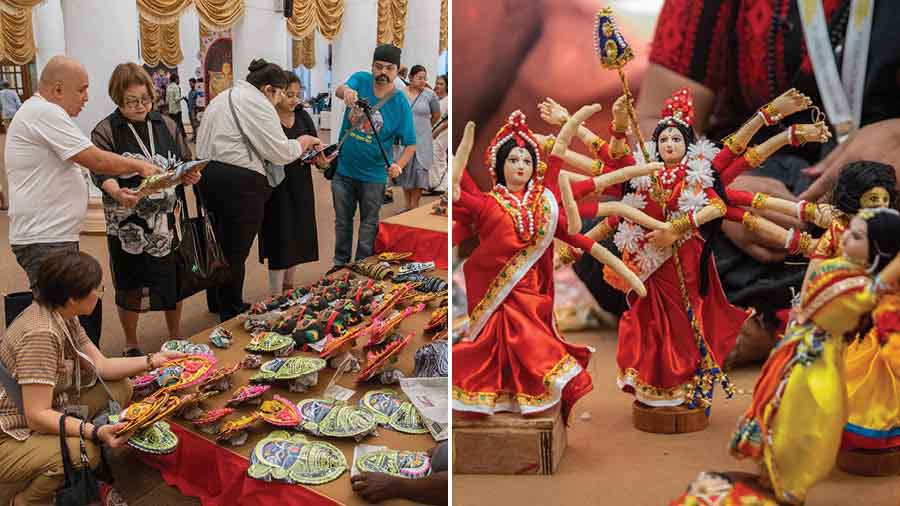
The international delegates were mesmerised by workshops that dissected the art of making masks and clay idols
The three day-event attracted over 200 delegates from more than 45 countries, united in Bengal’s festive fervour. Not only were they enlightened about the festival’s artistic prowess, but also its economic impact. In order to pack in authenticity, the summit comprised experiences like an exclusive peek into seven of the city’s most distinguished pandals; scrumptious traditional Bengali food at venues like The Bhawanipur House, Raajkutir, and Offbeat CCU; and expansive art workshops.
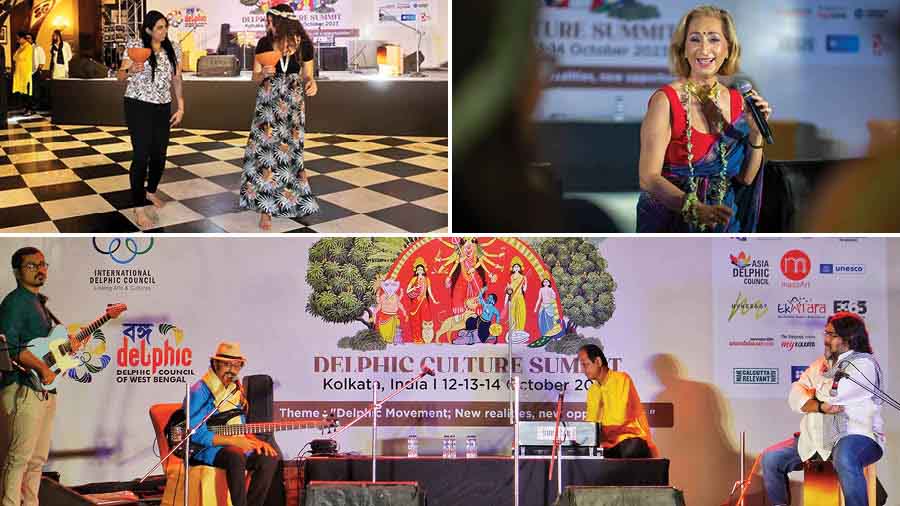
The second day ended with a gala that embodied many worlds coming together. (From left to right) Lotus Feet presented a blend of traditional and modern Bengal with their music; Rupal Betai, a projects manager at Techno India University taught Francesca Panico, a postgraduate student of intercultural relations from Italy, the dhunuchi naach; Greek opera singer Alexandra Gravas enthralled audiences with her voice
The summit commenced on October 11, termed Day 0, with the inauguration of an eco-friendly Maa Durga made with fabric by students at Techno India University’s Sector V campus.
Day 1 kickstarted at Techno India with a series of performances from the students and faculty, beginning with a soulful rendition of Raag Bhairav, also known as the Morning Raga, followed by Bajlo Tomar Aalor Benu, to signal the arrival of Maa Durga. Nrityaksha, the varsity’s dance team also presented a classical routine.

‘An event that blends arts and culture is really important for artists like me. We look forward to connecting with people who are bringing a contemporary outlook to our roots,’ said actor Neel Bhattacharya, who dropped by at Raajkutir
The afternoon was packed with insightful panel discussions by delegates on what the Delphic vision truly represents, how it can be adopted by different demographics, and how the arts and culture movement can be taken around the world. Some of the highlights were Rajanvir Singh Kapur’s insights on the impact of arts and culture in public services, and Roberta Williams’s reflection on 28 years of IDC. Kapur also enlightened the audience about the innovations by the government in keeping the trams relevant to Kolkata’s heritage. After dinner, the delegates were treated to the carnival that is Durga Puja, with guides breaking down the nuanced themes at south Kolkata pandals like Naktala Udayan Sangha and Barisha Club.
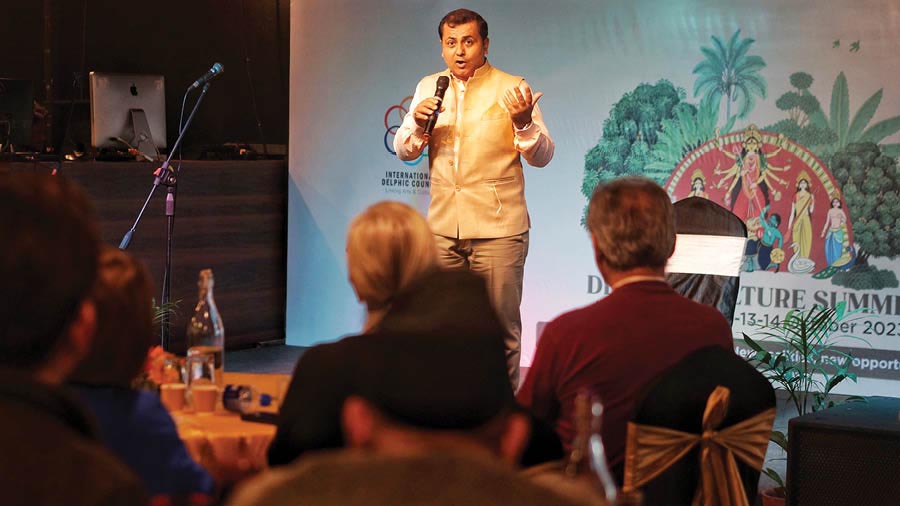
The final day was all about saluting the Delphic spirit of unity. Brigadier Sanjeev Chopra shared how he had engaged both his wife and daughter to join the delegation at the last moment. ‘After three decades in the army, I have realised that you cannot win hearts and minds by killing. True power lies in bonding with each other, and exchanging ideas’
Day 2 began with a focus on the economic side of the festival. Myndroot and Bongo Delphic collaborated to curate workshops on mask-making and clay idol artists at Town Hall. The delegates even witnessed a Chhau performance, in the presence of Chhau veteran Jagannath Choudhury from Purulia. This was followed by an interactive session with China Pal, who is among Kumartuli’s finest idol makers. After another pandal hopping expedition, this time at north Kolkata (think Kashi Bose Lane and Tala Park Prottoy), they arrived at Raajkutir for a special banquet, hosted in honour of Delphians, MassArt, British Council and Unesco.
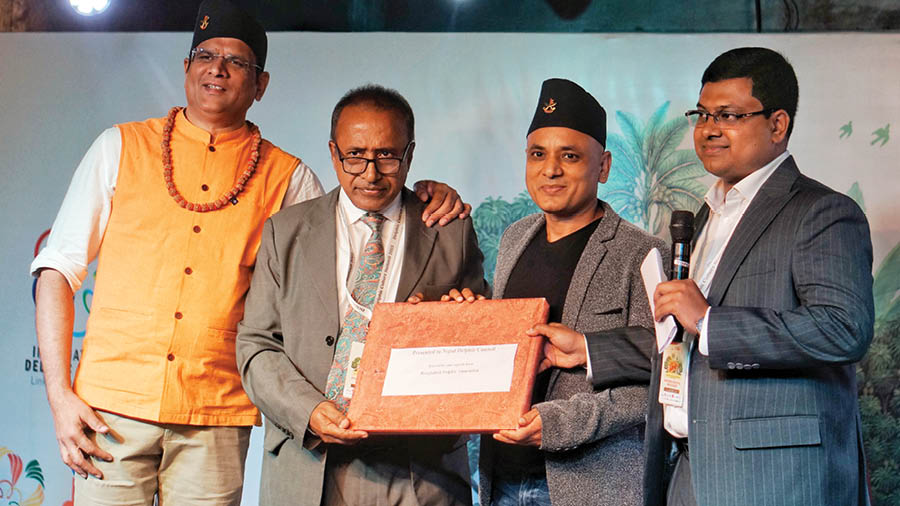
In the spirit of unity, (second from left) Mihir Kanti Choudhury of the Bangladesh Delphic Council presented a token of appreciation to (third from left) filmmaker B.L. Sridev, president of the Nepal Delphic Council (NDC)
The final day involved comprehensive discussions about spreading the Delphic vision across borders, with delegates sharing stories of compassion and unity. As the three-day summit came to an end, there were hugs and promises to meet again, for the love of art. “It is not about what you can get from the Delphic movement, but how you can add to it. When everyone works towards a common goal, we all reap the benefits,” said Ramesh Prasanna, secretary general of the International Delphic Council (India).
